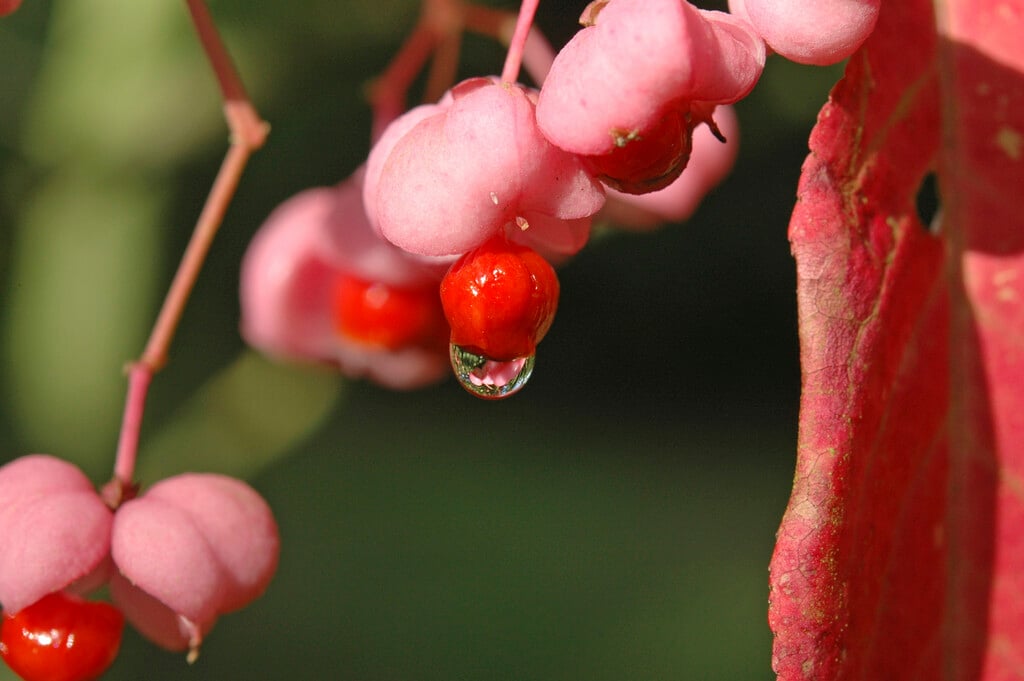Euonymus hamiltonianus
A variable species of large, deciduous or semi-evergreen shrub. Leaves vary in size and shape but are often long and oval-shaped, with short-toothed edges, sometimes with good autumn colour. Small, pale green flowers are followed by four-lobed, pink fruit that split to reveal orange or red seeds
Size
Ultimate height
4–8 metresTime to ultimate height
10–20 yearsUltimate spread
4–8 metresGrowing conditions
Moisture
Moist but well–drained, Well–drainedpH
Acid, Alkaline, NeutralColour & scent
| Stem | Flower | Foliage | Fruit | |
| Spring | Green | |||
|---|---|---|---|---|
| Summer | Green | Green | ||
| Autumn | Green Red Yellow | Pink Orange Red | ||
| Winter | Green |
Position
- Full sun
- Partial shade
Aspect
East–facing or South–facing or West–facing
Exposure
Exposed or Sheltered Hardiness
H6Botanical details
- Family
- Celastraceae
- Native to GB / Ireland
- No
- Foliage
- Deciduous or Semi evergreen
- Habit
- Bushy
- Potentially harmful
- Harmful if eaten. Wear gloves and other protective equipment when handling
- Genus
Euonymus can be deciduous or evergreen shrubs or small trees, often with fine autumn colour, and small flowers followed by colourful fruits
- Name status
Correct
- Plant range
- E Asia
How to grow
Cultivation
Grows in most well-drained soils in sun or part shade
Propagation
Propagate by softwood cuttings in summer
Suggested planting locations and garden types
- Cottage and informal garden
- Low Maintenance
- Hedging and screens
Pruning
Minimal pruning required, see pruning group 1
Pests
May be susceptible to vine weevil, horse chestnut scale, euonymus scale and caterpillars
Diseases
May be susceptible to powdery mildews and a leaf spot
Get involved
The Royal Horticultural Society is the UK’s leading gardening charity. We aim to enrich everyone’s life through plants, and make the UK a greener and more beautiful place.

